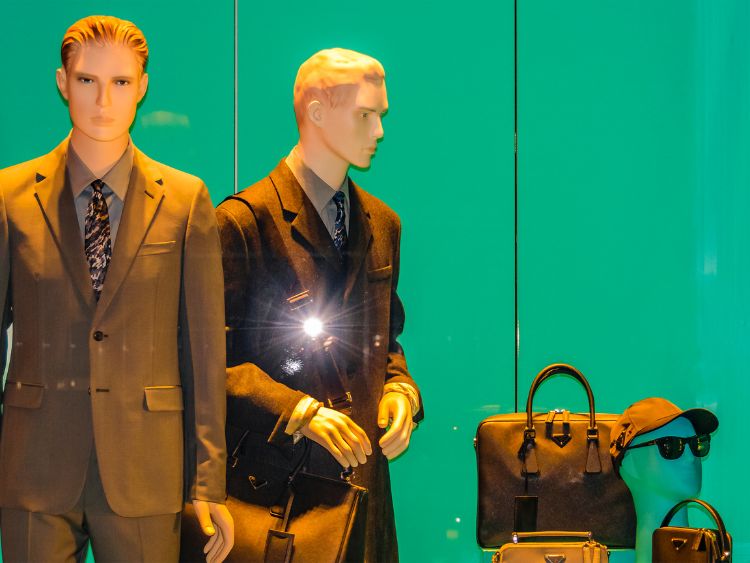Introduction: The Spectacle of Fashion Shows
A fashion show is more than just a runway event—it’s an artistic presentation, a cultural phenomenon, and an opportunity to make bold statements. Designers showcase their latest collections to eager audiences, influencing trends and setting the tone for the season. Whether you’re a fashion enthusiast or someone curious about the industry, understanding the intricacies of fashion shows is essential to appreciating the world of haute couture and ready-to-wear fashion.
Let’s dive into the glamorous world of fashion shows, explore their history, highlight their role in the fashion industry, and look at how these events continue to captivate global audiences.
What Exactly is a Fashion Show?
A fashion show is an organized event where designers present their upcoming clothing lines. These shows can range from small local gatherings to massive global spectacles that take place in major fashion capitals like New York, Paris, Milan, and London. Fashion shows are an essential marketing tool for designers and brands, giving them a platform to introduce their collections to buyers, media, and the public.
The History of Fashion Shows
Fashion shows date back to the mid-19th century when Charles Frederick Worth, the father of haute couture, invited clients to view his latest designs. This concept of the “fashion show” evolved in the early 20th century, as department stores in Paris and New York started organizing fashion parades. Models wore designs, showing potential buyers how the garments would look when worn. The concept gained momentum, transforming into the high-profile events we know today.
Key Milestones:
- The 1940s: Fashion shows became an essential feature of Paris Fashion Week.
- The 1970s: Designers began using fashion shows to make political and cultural statements.
- The 2000s: Fashion Week expanded beyond the big four (New York, Paris, Milan, London) to include cities like Tokyo, Shanghai, and Mumbai.
The Purpose and Impact of Fashion Shows
At its core, a fashion show aims to display a designer’s new collection in the most impactful way possible. The event serves several key purposes:
- Setting Trends: The designs featured in these shows set the trends for the season ahead. Industry professionals, from buyers to journalists, look to these shows for cues on what styles will be in demand.
- Brand Building: For designers, a successful show can catapult them into the global spotlight. The visibility and buzz created by a fashion show are invaluable in building a brand’s image and reputation.
- Entertainment and Art: Beyond the clothes, fashion shows often focus on delivering an experience. Through music, venue design, and choreography, designers create a unique atmosphere that complements the collection’s theme. A fashion show can be as much about the performance as it is about the clothes.
Components of a Fashion Show
A fashion show isn’t just a parade of models walking down the runway. It’s a meticulously crafted event involving various elements. Let’s break down the key components of a successful show:
1. The Runway:
The runway is the heart of a fashion show. Designers often experiment with the runway’s shape, length, and overall design to suit the theme of their collection. Some runways are traditional straight paths, while others might be more artistic, winding through a venue or staged outside in natural settings.
2. The Models:
Models are the vehicles through which designers present their vision. Their movements, expressions, and style contribute to the overall tone of the show. The rise of diversity and inclusivity in the modeling world has led to more varied representation on the runway, reflecting a broader range of beauty standards.
3. The Audience:
Fashion shows attract a mix of industry insiders, influencers, and celebrities. Attendees are typically fashion editors, buyers, photographers, and celebrities who help amplify the show’s reach through social media coverage.
4. Music and Lighting:
Music sets the mood, while lighting accentuates the designs. Designers often collaborate with musicians or DJs to curate a soundtrack that complements the collection’s theme.
5. Backstage Chaos:
Backstage is where the magic happens. Models rush to change outfits, stylists touch up hair and makeup, and the production team ensures the show runs smoothly.
Types of Fashion Shows
Fashion shows come in different forms, each catering to a specific segment of the industry:
1. Haute Couture:
These shows are held in Paris by a select few fashion houses like Chanel, Dior, and Givenchy. Couture pieces are handcrafted and often bespoke for elite clients.
2. Ready-to-Wear (Prêt-à-Porter):
These shows, held during Fashion Week, display clothing collections that will be available in stores. Unlike couture, these garments are mass-produced but still feature designer craftsmanship.
3. Men’s Fashion Shows:
Men’s fashion is gaining attention, with dedicated shows highlighting the latest in menswear.
4. Cruise and Resort Collections:
These shows present clothing that’s typically suited for vacationing. Designers showcase these collections outside of the typical fashion week schedule, often in exotic locations.
5. Streetwear Shows:
Streetwear has infiltrated mainstream fashion, with designers hosting shows that blend high fashion with urban aesthetics.
FAQs About Fashion Shows
Q1: How do fashion shows impact everyday fashion?
Fashion shows set the tone for seasonal trends. While runway pieces may be avant-garde or experimental, elements like colors, patterns, and cuts often trickle down to everyday wear, influencing what’s available in retail stores.
Q2: Can anyone attend a fashion show?
Most high-profile shows are invite-only and attended by industry insiders, celebrities, and media. However, some brands host public shows or stream them online, making them accessible to a wider audience.
Q3: How long does a fashion show typically last?
A typical runway show lasts anywhere from 10 to 30 minutes, depending on the size of the collection and the designer’s vision.
Q4: Why are models often expressionless on the runway?
The focus of a fashion show is on the clothing, not the models. Designers prefer models to maintain a neutral expression so that the attention remains on the garments.
Q5: What is the significance of “Fashion Week”?
Fashion Week is a series of events in major cities where designers showcase their latest collections. It’s the most anticipated event in the fashion calendar and often determines the trends for the coming season.
Fashion Shows in the Digital Age
In the last decade, technology has revolutionized the fashion show industry. Social media, particularly Instagram and TikTok, has turned fashion shows into global events. A show that once catered to a few hundred elite guests can now reach millions worldwide. Brands live-stream their shows, and influencers post live updates, making fashion shows more accessible to the general public.
Digital presentations are also becoming popular. Due to the pandemic, many designers embraced virtual shows, utilizing augmented reality (AR) and digital runways to present their collections. This shift has proven that fashion shows can adapt to changing times while still maintaining their allure.
The Future of Fashion Shows
The future of fashion shows seems to be evolving with the industry’s increasing focus on sustainability. Designers are rethinking how they present collections, with some opting for eco-friendly venues, digital-only shows, and reducing the waste generated by large-scale events. As consumers demand more transparency and responsibility from fashion brands, the way fashion shows are produced and perceived will likely continue to shift.
Fashion shows have always been a platform for change, and this adaptability will keep them at the forefront of the fashion industry.
Conclusion: The Everlasting Magic of Fashion Shows
Whether you see them as an art form, a marketing tool, or simply a fun event, fashion shows play an undeniably important role in the world of style and culture. They bring creativity to life, offer a glimpse into the future of fashion, and most importantly, keep us all inspired. So the next time you hear about the latest collection from a top designer, know that you’re witnessing a piece of fashion history in the making.
If you’re looking for comprehensive and insightful reviews across a variety of industries, look no further than Especially Style. Whether you’re interested in discovering the top baby and parenting websites here, or seeking out the best wedding platforms for planning your special day, you’ll find detailed breakdowns in this guide here.
For those in search of more professional resources, Especially Style also offers thorough analyses of leading legal websites here and provides in-depth reviews of top loan websites here. You can even explore insurance and government website reviews here, helping you navigate complex industries.
Travel enthusiasts will appreciate this guide here, showcasing the top travel websites. Meanwhile, for those in the corporate world, business and finance website reviews are here, offering clarity on the best platforms for your financial needs.
Explore the fashion and entertainment website reviews here or get a breakdown of the best automotive platforms here. If you’re passionate about animal rights and welfare, you’ll find the leading resources reviewed here here.
Tech enthusiasts aren’t left out either, with top technology websites thoroughly evaluated here here. Health-conscious readers can explore the best health and wellness sites here, while homeowners and real estate professionals will find the top real estate platforms reviewed here.
Lastly, if you’re looking for comprehensive reviews across multiple domains, the all-encompassing Especially Style guide is available here, and sports lovers can check out sports platform reviews here.





